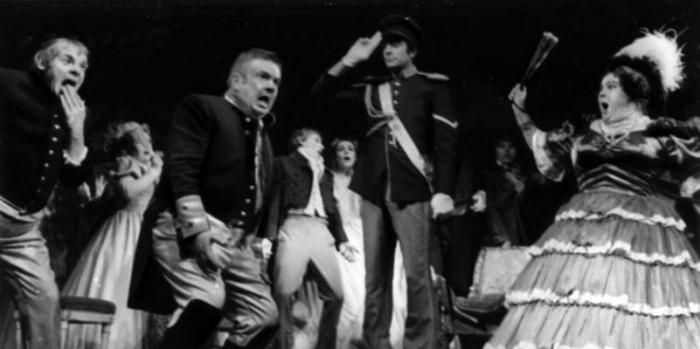Composition in the literature
The composition of the literary work significantlyinfluences the expression of his idea. The writer focuses his attention on the life phenomena that attract him at the given time and embodies them through the artistic depiction of characters, landscapes, moods. At the same time he seeks to unite them so that they are truly persuasive and really reveal what he wanted to show in order to encourage the reader to reflect.
The fact that the composition in the literature is essentialinfluences the disclosure of the ideological intentions of the writer, Belinsky constantly pointed out in his works. He believed that the main idea of the author should correspond to the following criteria: isolation and completeness of the whole, completeness, proportional distribution of roles between the heroes of the work of art. Thus, the composition in the literature is determined by the positions of the author: ideological and aesthetic. But the idea and theme can unite in harmony only in a mature work.
The composition of the text is consideredliterary scholars from different points of view. And on the general definition, they did not agree to this day. Most often the composition in the literature is defined as the construction of a work of art, the correlation of all its parts with a single whole. It is known that it has many components that writers use in works for the sake of completeness of depicting life pictures. The main elements, which make up the composition in the literature, are lyrical digressions, portraits, plug-in episodes, epigraphs, titles, landscapes, and the surrounding situation.
The epigraphs and titles bear a special load in themselves.
The title, as a rule, indicates the following aspects of the work:
- subjects (for example, Bazhov "Malachite Box");
- images (for example, George Sand "Countess Rudolphstadt", "Valentina");
- problems (E. Rich "What moves the sun and the stars").
The epigraph is a kind of additional name, which is usually associated with the main idea of the work or hints at the bright features of the protagonist.
Lyrical digressions stand apart fromstoryline. With their help, the author has the opportunity to express his own attitude to those events, phenomena and images that he portrays. There are also such lyrical digressions, in which the experiences of several characters merge, but it is still clear that here the writer expressed his feelings and thoughts. For example, as in the retreat of the mother hands in the novel "Young Guard" Fadeev.
Choosing a sequence of joining the listed elements, their principles of "assembly", each author creates a unique work. And he uses the following methods of composition:
- Ring composition, or composition of the frame. The writer repeats the artistic descriptions, stanzas at the beginning of the work, and then - at the end; the same events or heroes at the beginning of the narrative and in the finale. This technique is found both in prose and in poetry.
- Inverse composition. When the author puts the finale in the beginning of the work, and then shows how the events developed, explains why this is so, and not otherwise.
- The use of retrospective reception - whenthe writer puts readers in the past when the causes of those events that happened at the moment were being formed. Sometimes retrospection is given in the form of memoirs of the main character or his story (the so-called "story in the story").
- Compositional rupture of events, when one chapterends at the most intriguing moment, and the next begins with a completely different action. This technique is more often found in the works of a detective, adventurous genre.
- Using the exposure. It can precede the main action, and may even be absent.





